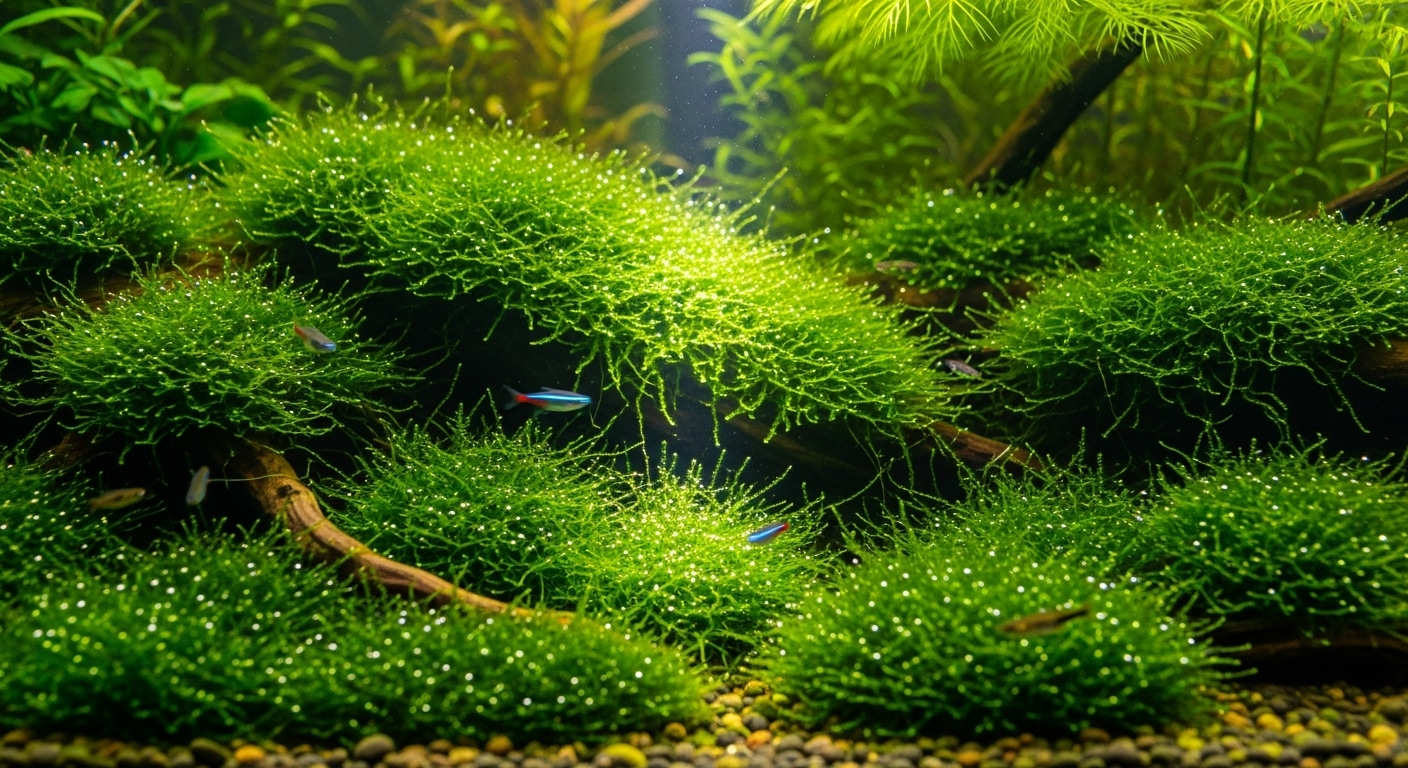The Hidden World of Aquarium Moss: Nature's Underwater Tapestry
Discover the captivating realm of aquarium moss, a miniature ecosystem that transforms tanks into living works of art. These tiny plants play a crucial role in aquatic habitats, offering both beauty and functionality to underwater landscapes. Aquarium moss, a group of diverse bryophytes adapted to aquatic environments, has been captivating aquarists and hobbyists for decades. These versatile plants not only enhance the aesthetic appeal of tanks but also contribute significantly to water quality and provide essential microhabitats for aquatic creatures. From the delicate fronds of Java moss to the intricate patterns of Christmas moss, these underwater wonders offer a fascinating glimpse into the complex world beneath the surface.

Varieties and Characteristics
The world of aquarium moss is surprisingly diverse, with numerous species available to suit different tank setups and aesthetic preferences. Java moss (Taxiphyllum barbieri) remains one of the most popular varieties, known for its hardy nature and versatility. Other notable species include Christmas moss (Vesicularia montagnei), with its distinctive triangular fronds, and Flame moss (Taxiphyllum sp.), which grows in an upright, flame-like pattern.
Ecological Benefits in the Aquarium
Beyond their visual appeal, aquarium mosses play a crucial role in maintaining a healthy tank ecosystem. These plants act as natural filters, absorbing excess nutrients and helping to prevent algae growth. They also provide shelter and breeding grounds for small fish and invertebrates, mimicking the complex habitats found in natural water bodies.
Cultivation and Care
Successful cultivation of aquarium moss requires attention to specific environmental factors. Most species thrive in low to moderate light conditions and prefer cooler water temperatures. Proper nutrient levels and CO2 supplementation can enhance growth and vibrancy. Regular trimming and maintenance are essential to prevent overgrowth and maintain the desired shape and density of the moss.
Innovative Applications in Aquascaping
Aquarium moss has become a cornerstone of modern aquascaping, allowing hobbyists to create intricate, naturalistic layouts. Techniques such as moss walls, moss trees, and moss carpets have revolutionized the art of underwater landscaping. These methods not only showcase the versatility of moss but also allow for the creation of stunning, three-dimensional aquascapes that mimic terrestrial environments.
Moss in Biotope Aquariums
The use of aquarium moss in biotope setups has gained popularity among enthusiasts seeking to recreate specific natural habitats. By carefully selecting moss species native to particular regions, aquarists can create authentic representations of ecosystems from around the world, from Southeast Asian streams to South American riverbeds.
The Science of Moss Growth
Understanding the biology of aquarium moss is crucial for successful cultivation. These plants reproduce primarily through fragmentation and spore production, with growth rates varying depending on species and environmental conditions. Recent research has focused on optimizing growth conditions and exploring the potential of moss in bioremediation and water purification applications.
Challenges and Solutions
While aquarium moss offers numerous benefits, it can present challenges for novice hobbyists. Issues such as algae overgrowth, pest infestations, and nutrient deficiencies can hinder moss growth and overall tank health. Proper maintenance techniques, including regular pruning, balanced fertilization, and effective CO2 management, are essential for overcoming these obstacles and maintaining healthy moss growth.
Future Trends and Innovations
The world of aquarium moss continues to evolve, with new species and cultivars being discovered and developed. Advancements in tissue culture techniques have made it possible to produce moss varieties with unique growth patterns and colors, expanding the palette available to aquascapers. Additionally, the integration of moss in vertical gardening and urban greening projects points to exciting possibilities beyond the confines of the aquarium.
Conclusion
Aquarium moss represents a fascinating intersection of art, science, and nature. As hobbyists and researchers continue to explore the potential of these tiny plants, their role in aquatic ecosystems and aquascaping is likely to grow. Whether used to create stunning underwater landscapes or to improve water quality, aquarium moss offers a world of possibilities for those willing to delve into its lush, green depths.





